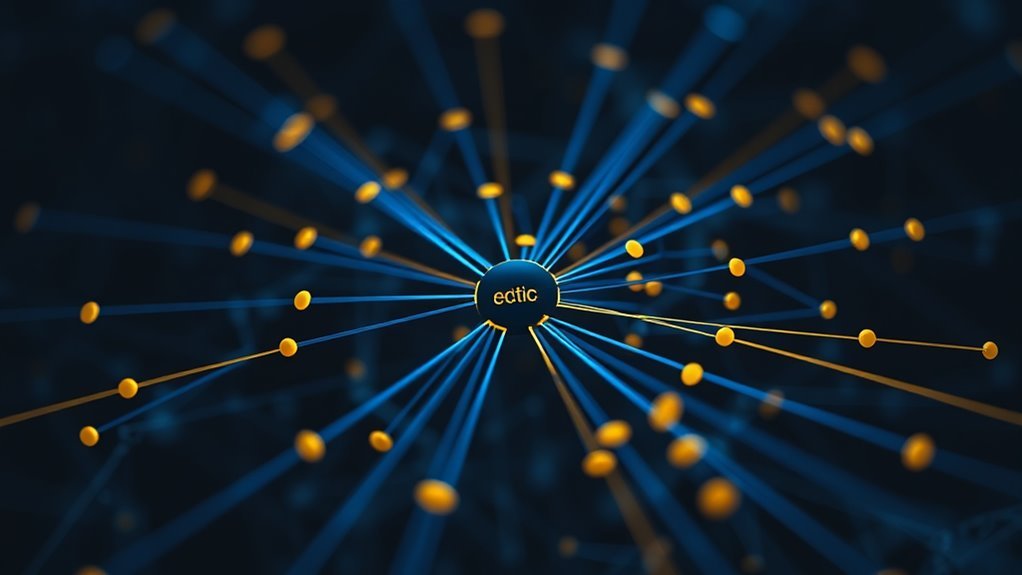You'll find the most effective reinforcement learning methods for AI agents include policy gradient, value function estimation, actor-critic, model-based learning, and meta learning techniques. These methods help agents learn and adapt in complex environments. You're likely to achieve better results by combining these approaches. Policy gradient and actor-critic methods work well together, while model-based learning can improve sample efficiency. As you investigate these methods further, you'll uncover how they can be tailored to suit your specific AI agent needs and challenges.
Need-to-Knows
- Policy Gradient Methods optimize policies directly.
- Value Function Estimation predicts expected returns.
- Actor-Critic Algorithms combine policy and value.
- Model Based Learning predicts future states.
- Meta Learning Techniques enable rapid adaptation.
Policy Gradient Methods
Optimizing the policy directly by using gradient ascent techniques is essential to Policy Gradient Methods, which maximize expected cumulative rewards, making them particularly effective for high-dimensional and continuous action spaces.
You'll find that these methods can learn stochastic policies, allowing agents to investigate diverse actions. This is vital for environments where randomness plays a significant role.
Policy Gradient Methods, such as Actor-Critic algorithms and Proximal Policy Optimization, can get stuck in local optima during training. To mitigate this, you can use techniques like advantage function estimation to improve the reliability of gradient estimates.
By doing so, you'll augment the stability and efficiency of your training process. Policy Gradient Methods are useful when dealing with high-dimensional action spaces, and they can learn to maximize cumulative reward over time.
You can use gradient ascent techniques to update your policy and avoid getting stuck in local optima, making Policy Gradient Methods a powerful tool for reinforcement learning.
Value Function Estimation
You'll find that value function estimation is a fundamental concept in reinforcement learning, building on the ideas of policy optimization you've seen in Policy Gradient Methods. It involves estimating the expected return or future rewards an agent can achieve from a given state or state-action pair. Reinforcement learning algorithms like Q-learning and deep Q-Networks rely on value function estimation to determine choices.
- You'll use dynamic programming to solve complex problems.
- You'll apply Monte Carlo methods to estimate values.
- You'll utilize temporal difference learning to update values.
- You'll choose a discount factor to balance immediate and long-term rewards.
The choice of discount factor influences the agent's focus, with lower values prioritizing short-term gains and higher values promoting sustainability.
Actor Critic Algorithms

Most reinforcement learning algorithms can be categorized as either value-based or policy-based, but Actor-Critic algorithms don't fit neatly into one category – they combine the benefits of both.
You'll find that Actor-Critic methods utilize two separate neural networks: an actor that updates the policy directly and a critic that evaluates the value of the actions taken. This approach allows you to achieve faster convergence and improved stability in reinforcement learning.
By leveraging the critic's value estimates, you can reduce variance in the actor's policy updates, making Actor-Critic algorithms effective for both discrete and continuous action spaces.
They're suitable for complex tasks and dynamic environments, where exploration and stability are essential. You can apply Actor-Critic algorithms to various environments, including robotics and game playing, allowing you to tackle complex tasks with ease.
Model Based Learning
Building on the concepts of Actor-Critic algorithms, it's clear that reinforcement learning's effectiveness relies heavily on how agents learn from their environment.
You'll find that model-based learning is a key aspect of this, as it focuses on creating a model of the environment to predict future states and rewards. This approach improves sample efficiency and data utilization, allowing agents to learn from fewer interactions compared to model-free approaches.
You can utilize model-based learning to:
- Improve sample efficiency in high-dimensional task spaces
- Reduce the number of training tasks required
- Allow agents to generalize from limited data to complex real-world scenarios
- Augment decision-making by predicting future outcomes
However, you must be aware that biases or overfitting can lead to suboptimal decision-making.
Meta Learning Techniques

Flexibility is key when it comes to reinforcement learning agents, and that's where meta learning techniques come in – they allow agents to rapidly adapt to new tasks by leveraging prior experiences and knowledge.
You'll find that meta-learning, also referred to as "learning to learn," empowers agents to markedly improve their performance in novel environments.
Model-Agnostic Meta-Learning (MAML) is a popular method that quickly fine-tunes across different tasks with only a few training iterations, demonstrating efficiency in few-shot learning scenarios.
When using meta-learning, you'll need to balance exploration and exploitation, as agents must uncover ideal actions in unfamiliar environments while retaining learned knowledge from previous tasks.
You'll additionally need to take into account task distribution and optimization strategies to improve generalization capabilities and manage computational complexity.
Be aware that overfitting is a common challenge, and efficient algorithms are necessary to avoid it and boost agent performance.
Most-Asked Questions FAQ
What Are the Best Techniques for Reinforcement Learning?
You're exploring techniques, considering Deep Q Networks, Policy Gradients, and Actor Critic Methods for improved learning, utilizing Temporal Difference Learning and Proximal Policy Optimization for better outcomes.
What Is an Example of Reinforcement Learning in AI?
You're exploring AI, and reinforcement learning examples include Q learning applications, using policy gradients, value functions, and reward shaping in multi-agent systems, with deep reinforcement in real-world training environments.
Is PPO the Best RL Algorithm?
You consider PPO's advantages, like stability and sample efficiency, but as well its limitations, and comparisons to A3C, when deciding if it's the best fit for your project's specific needs and applications.
Is Chatgpt Based on Reinforcement Learning?
You're wondering if ChatGPT's based on reinforcement learning, it's partially true, as its training process involves reinforcement learning applications, enhancing performance metrics and user interactions, with a focus on ethical considerations.
Conclusion
You'll improve AI agents' decision-making by leveraging these methods. Policy gradients, value function estimation, actor-critic algorithms, model-based learning, and meta-learning techniques elevate performance. You're choosing the best approach based on your agent's needs, and it's boosting results. You're applying these methods to create more efficient and adaptable AI agents.
